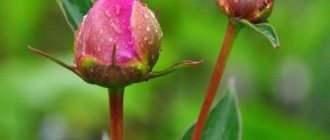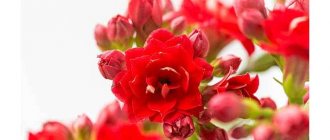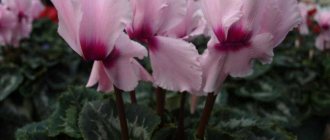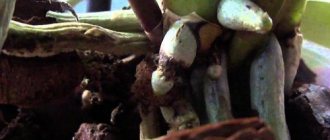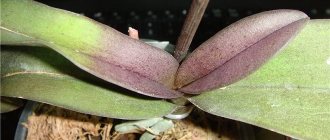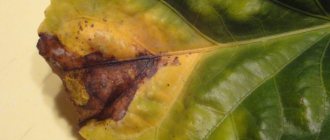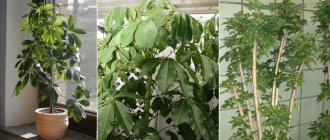No matter how well you care for the fruit trees and berry bushes in your garden, they are still susceptible to diseases and pest attacks.
Dear readers!
For you, we have created communities on social networks in which useful articles and interesting ideas are published several times a day! Subscribe and receive useful content in a convenient format! However, it is necessary to protect your fruit trees and shrubs if you do not want to be left without fruits and berries.
In today's article we will talk about what diseases the garden is susceptible to, how to protect fruit trees and shrubs, as well as what preventive measures to take.
Treatment of the garden against pests and diseases of vegetables
When fighting pests, plant diseases and weeds, it is important to apply fertilizers in a timely manner, properly cultivate the soil and thoroughly weed the crops.
Fertilizers. The application of organic and mineral fertilizers when treating the garden against diseases and pests promotes the formation of seedlings that are more resistant to damage. When using fertilizers that accelerate the growth of seedlings, there is a mismatch between the development of plants and pests, so the pests die or their harmfulness is reduced.
Feeding with phosphorus and phosphorus-potassium fertilizers during the period when insects lay eggs significantly reduces the number of pests and their harmfulness.
In addition, insect control can be carried out using various fertilizers. Superphosphate is effective against slugs, ammonia fertilizers help get rid of wireworms.
Phosphorus fertilizers increase the physiological stability of plants. Phosphorus and potassium help strengthen the tissues of stems and leaves, which makes it difficult for pests to feed and increases plant resistance to various diseases.
One of the means of combating plant diseases is mineral fertilizing in combination with the application of organic fertilizers. This protects against disease and impairs the feeding of aphids and other pests. An excess of phosphorus inhibits the vital functions of insects, and an excess of nitrogen promotes the formation of wider leaves in plants, the accumulation of water and carbohydrates, so such crops, on the contrary, become more attractive to insects.
Tillage system. An effective agrotechnical method of combating plant diseases is proper and timely tillage.
The soil is a habitat for many pests that live in it constantly and during certain periods. When cultivating the soil, the larvae and pupae of pests end up on the surface, where they are destroyed by other insects or insectivorous birds or die from sudden changes in temperature and humidity. Many larvae die from mechanical damage during soil cultivation.
It is especially important to cultivate the soil in spring and autumn
Mosaic/Ring spot
Photo from Wikimedia.org
| What crops does it affect? | How to recognize | How to fight |
| Raspberries, currants, garden strawberries | The leaves of the crop are covered with yellow spots, reminiscent of a mosaic. Sometimes the spots can be limited to veins, resembling a certain pattern or design that moves from the foliage to other parts of the plant. The infection may be asymptomatic or cause leaf deformation. The yield of the plant decreases and it may die. | Control measures There is no treatment for this virus. Severely affected plants will have to be removed along with the earthen clod and destroyed. Prevention Growing relatively resistant varieties purchased from a trusted seller. Timely treatment of plants with insecticides against pests as the main carriers of the disease. Removal of wild plant carriers. Timely fertilizing to maintain immunity in crops. |
Fruit tree diseases
How to identify and treat diseases of indoor plants
Various diseases significantly reduce productivity. Severely weakened plants may even die. That is why fruit trees must be treated from pests and diseases in a timely manner.
In addition, it is very important to follow preventive measures and rules of agricultural technology for fruit crops
To combat diseases and pests of fruit trees, we use various fungicides and insecticide preparations, which we dilute in water before the process itself according to the recommendations in the instructions attached to them. Next, we will consider what diseases there are in fruit trees.
Plant diseases. milky shine
Signs: The disease affects many fruit trees. With it, a silvery coating appears on the leaves. The top skin is easily removed. When cutting branches of a diseased plant, the cut wood has a brown or purple tint.
Control measures: cut off diseased branches 10–15 cm below the darkened wood. We treat the cuts with garden varnish.
Plant diseases. Moniliosis
Signs: This fungal disease can occur in most trees. Brown spots with concentric circles of white sporulation appear on the fruits.
Control measures: burn diseased fruits. We spray the plants with Planriosis (50 ml/10 l of water) every 10 to 15 days.
Plant diseases. Leaf curl
Symptoms: This fungal disease appears on peaches and nectarines. The leaves are deformed. Brown bubbles appear on them. The disease affects fruit trees before buds open.
Control measures: destroy diseased leaves. We treat plants with Bordeaux mixture before buds open, after harvesting and before leaves fall.
Plant diseases. Scab
Signs: This fungal disease develops on apple and pear trees. Signs of its appearance are olive spots on the leaves and brown scabs on the fruits.
Control measures: we regularly spray the trees with Kaptan, Skor, Horus, Sistan, Benomil, Integral, Ditan, Rubigan. We burn diseased leaves in a timely manner. At the beginning of the growing season, we treat the plants with 1% Bordeaux mixture. Spray the root circles with 10% ammonium nitrate. We treat the trunks and skeletal branches with lime milk (1 kg of lime/10 l of water).
Plant diseases. Stone fruit hole spot
Signs: This disease can appear on plums, peaches, cherries and cherries. It causes holes and dark spots to form on the leaves.
Control measures: regularly water and fertilize trees. We spray the plants with copper-containing fungicides.
Plant diseases. Bacterial cancer
Signs: the disease develops on cherries, cherries, and plums. With it, oblong growths form on the trunk of fruit trees, from which gum oozes. With this disease, the leaves quickly wither.
Control measures: cut off the branches in the summer. Spray the affected plants with Bordeaux mixture.
Plant diseases. Fruit tree cancer
Signs: This fungal disease affects the trunks and branches of apple and pear trees. With it, elliptical growths appear on trees, causing the bark to dry out.
Control measures: cut out the diseased parts with a sharp knife. We carefully treat the resulting wounds with garden varnish. We spray sick trees with Benomyl and 1% Bordeaux mixture.
Plant diseases. Splitting the bone
Symptoms: This disease can occur on peaches and nectarines. In this case, the seed of the fruit splits along the seam, and then the fruit also cracks.
Control measures: regularly fertilize, water and mulch trees. If there is acidic soil, we liming it.
Plant diseases. Cytosporosis
Signs: This disease affects apple trees. A sign of its appearance is the peeling of pale brown thin layers of bark throughout the growing season.
Control measures: cut out dead shoots in a timely manner, destroy rotting plant tissue, cover the wounds formed on the tree with garden varnish.
Plant diseases. Bitter pitting
Signs: the disease develops on apple trees. Brown spots form on the pulp and peel of the fruit.
Control measures: feed and mulch the plants in a timely manner. In June, we spray the trees with calcium nitrate (4 tablespoons/11 liters of water). We re-process the apple trees after 3 weeks.
Plant diseases. Sooty fungus
Signs: an easily erasable black fungal coating appears on the shoots and leaves.
Control measures: spray the plants with a copper-soap solution (5 grams of copper sulfate, 150 grams of soap/10 liters of water), 1% Bordeaux mixture, copper oxychloride. We thin out thickened crowns of fruit trees in a timely manner.
Peach leaf curl
The fungus attacks leaves, growing shoots, and sometimes flowers and fruits of peach. The leaves curl, wrinkle, and become pale or slightly reddish in color. Then they turn brown and fall off. A grayish coating of sporulation appears on them. Affected shoots are stunted in growth, swell, and have curly leaves. Later the shoots die. The fungus overwinters on bud scales. Infection occurs during bud break.
Control measures. Spraying with copper sulfate during swelling and bud opening. Before flowering - spray with 3% Bordeaux mixture. Pruning and destroying affected shoots.
Caterpillar pests
All pests and diseases of roses and how to fight themRoses pests and diseases Powdery mildewRed spider miteRustLeaf-eating beeLeaf rollersBronze and fawnAphid Foamy cuckoo's droolGrey moldCaterpillars, slugs, snailsCancerFox spotting
Among garden plant pests, caterpillars occupy the first place. Firstly, almost every representative of their large family is already a pest, since they feed mainly on leaves and fruits. Secondly, pest caterpillars have good camouflage skills, so that only the result of their work remains noticeable. And these are gnawed leaves, bitten flower petals and a withering plant.
Foam slobber
slobber
This is a butterfly that, being in the larval stage, causes significant damage to plants. She likes to settle in the axils of leaves, or on their reverse side. The size of the larva is very small, only about 5 mm, but what gives the slobber is its habit of leaving foamy secretions, by which it can be easily recognized. The occupied leaves gradually curl and die, the plant does not bloom and loses its beauty.
At risk: ornamental shrubs, especially roses. macro
leaf roller
leaf roller
The most frequent guest in the garden. This leaf-sized green caterpillar has a "vegetarian" diet and feeds primarily on foliage. There are subspecies of caterpillars that feast on certain types of plants, such as roseate budworms. Future butterflies easily identify themselves by the characteristic leaves rolled into a roller, in which they live. If the leaf is disturbed, the caterpillar can escape by climbing down a thin web.
At risk: ornamental shrubs.
Sawfly
sawfly
Another dangerous and very insidious pest for plants. The essence of his cunning is that he destroys the plant not from the outside, but directly from the inside, gnawing tunnels for himself inside the stems. As a rule, it prefers woody shrubs. If the branches on a rose bush suddenly change color, become lifeless and dry out, if you break a shoot, you will probably see a sawfly tunnel inside. It itself is a white larva about 2 cm in size, which hides in the soil in winter and occupies nearby territories in spring.
At risk: ornamental shrubs, including roses, rose hips, hydrangea, etc.
Wireworm
wireworm
This is a summer resident’s “horrible dream”, a click beetle larva that looks like a piece of wire. The beetles themselves are not as dangerous as their larvae. Being in “childhood” age, these malicious pests cause significant damage to dacha farming, eating underground parts: tubers, bulbs, root crops, destroying ornamental plants and spoiling the harvest. How to get rid of wireworms on your property? It is quite difficult to drive it away; it is easier to prevent its occurrence - read the “prevention” paragraph below.
At risk: tuberous and bulbous crops.
Cytosporosis/Stem rot
| What crops does it affect? | How to recognize | How to fight |
| Fruit trees | On tree trunks, in the area of cracks, the bark becomes reddish-brown. Then, small black tubercles with accumulations of spores of the causative fungus gradually appear on the entire surface of the tree bark. At the same time, gum formation may occur. | Control measures Thoroughly clean the affected area, treat the wound with a copper-based fungicide (HOM, Abiga-Pik, Indigo, Ordan, OxyKHOM), and then cover it with RanNet or BlagoSad. Prevention Growing relatively resistant varieties purchased from a trusted seller. Protecting trees in winter from sunburn, frost damage and rodents. Careful pruning and grafting. |
Plant diseases. Protecting fruit trees from spot diseases
Preparing ornamental plants for winter
Brown spot. This disease of fruit trees is widespread and has two waves of development - early spring and autumn. In summer, during drought, the disease subsides, but does not disappear. Red-brown spots of a round, vague shape appear, black spots form on the surface of the leaves, cushions - the fruiting bodies of the fungus are a source of overinfection of plants. The fungus overwinters inside the leaves.
Ramulariasis, or white spotting. Affects up to 50% of the leaf blade. On the leaves of fruit trees affected by this disease, small round spots appear, light gray in the center, with a clear purple rim; the center of the spot falls out, the leaf looks holey. In humid weather, a light coating of sporulation develops in the form of dense formations. It overwinters on leaves and is a source of infection. You can lose up to 15% of the harvest.
Brown or angular spotting. The most harmful in the southern regions, it affects up to 60% of leaves, causing their mass death.
As can be seen in the photo, with this disease, light brown spots form on the leaves of fruit trees, then dark spots with purple spots:
The spots enlarge and spread over the entire leaf. The shape of the spots is angular, they are located along the midrib of the leaf. Angle spot often damages older leaves and the disease progresses in the fall.
To protect fruit trees from these diseases, pay special attention to agricultural technology:
- choose an open, ventilated, sunny location;
- best predecessors; onions, garlic, lettuce, herbs, beets;
- cannot be placed after nightshades, tomatoes, peppers, eggplants, potatoes, asters, lilies, gladioli, chrysanthemums;
- do not compact the plantings, remove weeds;
- maintain the plantation for no more than 3 years;
- purchase planting material from research institutes or nurseries;
- plant varieties only zoned in a given zone;
- early in the spring, clean the plantations from old leaves;
- during the growing season, remove all tendrils, except those that will be used for planting new plantings;
- collect berries damaged by gray rot and late blight;
- during the “budding” period it can be treated with immunocytophyte;
- Before the berries ripen, mulch the rows with dry grass, sawdust or straw;
- To reduce the number of mites and diseases, it can be recommended to remove the leaf apparatus, provided that pruning is carried out immediately after the last berries are harvested. Leave leaf cuttings (1-2 cm) above the heart. Delay is dangerous, the plant weakens and does not tolerate wintering well. Immediately water and fertilize with a complete complex fertilizer.
Against a complex of pests and diseases of garden trees, see the monthly work calendars and follow the following tips:
- against ants and mole crickets, add Thunder to the soil at the beginning of the growing season - 30 g/10 m2;
- against various kinds of spots, gray rot on fruiting strawberries, immediately after the snow melts and at the very beginning of the growing season, it is necessary to carry out eradicating spraying with 3% Bordeaux mixture. If for any reason you are late, use a 1% solution of copper sulfate or copper-soap emulsion (200 g of soap and 20 g of copper sulfate per 10 liters of water);
- The use of the biostimulator Novosil gives good results.
Downy mildew/Peronospora/Mildew
Photo from Agric.wa.gov.au
| What crops does it affect? | How to recognize | How to fight |
| Grapes (in rare cases - other fruit crops) | Young leaves of the plant are covered with barely noticeable chlorotic spots, while adults are covered with small angular spots with the formation of a whitish fluffy coating on the back of the leaf. Subsequently, the disease may appear on fruits in the form of white or gray rot. The productivity of the plant decreases, the quality of the fruit decreases. | Control measures Treatment of affected plants with OxyHOM, Proton Extra, Thanos (according to the instructions for grapes). Removing affected parts of plants. Prevention Growing relatively resistant varieties purchased from a trusted seller. Timely annual pruning of plants. Destruction of leaf litter. Timely preventive treatments according to the schedule with the drug Sporobacterin. |
- Peronosporosis, or downy mildew - photo, description, treatment methods
How to understand that crops are affected by downy mildew, and what adequate measures need to be taken to eliminate it.
Pests and diseases of cabbage. Plant diseases
Specialist opinion Victor Korolevskiy Rheumatologist
I advise you a new natural remedy to combat joint pain - it regenerates cartilage and joint tissue. Want to try?
White cabbage is most often affected by fungal diseases, which can develop at any stage of cultivation. These include (Figure 1):
- Blackleg mainly affects seedlings. The root part of the stem begins to darken, gradually rots and the seedling dies. When seedlings with several true leaves are infected, the crop does not die, but is significantly retarded in growth due to a curved root collar. Blackleg can also appear in the fall, causing rotting of the leaves around the stalk.
- Downy mildew (downy mildew) can affect cabbage of various ages, but seedlings are more often infected. The lower part of the leaves is covered with a white powdery coating (solid or in the form of separate spots). Gradually, the affected areas darken and rot. Infected seedlings die, and mature vegetables cannot be sent for storage, as they can lead to the loss of the entire crop.
- Dry rot (fomoz) affects all parts of cabbage, regardless of the stage of development of the crop. The stems first darken, then become covered with a gray coating and dry out. When formed heads of cabbage are infected, they gradually dry out and are not suitable for storage.
- Clubroot is one of the most common cabbage diseases. The disease affects the roots, forming tumors and growths on them. As a result, the crop begins to lag in growth and produces virtually no harvest. If clubroot begins at the stage of seedling development, heads of cabbage will not form.
- Fusarium (yellowness) infects the vascular system of the crop and leads to blockage of passages for the circulation of juice. Infected seedlings die, and adult vegetables stop growing. The main symptom of fusarium is yellowing of the leaves. Fusarium can be provoked by increased humidity and temperature.
- Gray rot most often appears on mature cabbage heads stored for storage. A fluffy coating appears on the surface of the leaves, which gradually leads to rotting of the vegetable.
Figure 1. Main diseases of cabbage: 1 - blackleg, 2 - downy mildew, 3 - dry rot, 4 - clubroot, 5 - fusarium, 6 - gray rot
To prevent the development of fungal diseases of cabbage, it is necessary to carefully observe crop rotation, carry out pre-sowing seed treatment and adhere to the schedule and watering norms.
Also, the parasitic plant broomrape can develop on the roots of cabbage. This is a branching weed that receives juices from cabbage roots, slows down the growth of the crop and can cause the vegetable to fail to produce a harvest.
Pests can cause just as much damage to cabbage. The main insects include (Figure 2):
- Cruciferous flea beetles are small beetles that eat the leaves of seedlings and mature plants. As the pest eats the upper part of the leaves, they gradually become covered with small sores. With a massive invasion of pests, cabbage seedlings may die, although cruciferous flea beetles do not pose a great danger to adult plants. But they can still spoil the harvest and make cabbage heads of poor quality. The main method of control is early planting of seedlings in the ground. By the time the pests appear, the seedlings will be sufficiently strong. They also practice pollination of planted seedlings with dust.
- The cabbage fly looks similar to a regular fly, but is smaller in size. The insect lays eggs near cabbage beds, and the hatching larvae damage the root system of the vegetable. The main sign of damage is darkening and wilting of the lower leaves. For prevention, dust pollination is used, and when larvae are detected, the soil is treated with special chemicals or sprinkled with a mixture of sand and naphthalene in a 7:1 ratio.
- Cabbage moth is a small butterfly that lays eggs on cabbage leaves. A caterpillar emerges from them and feeds on the tissues of the leaves, digging holes in them. To prevent infection, young seedlings are sprayed with herbicides (calcium arsenate or chlorophos).
- Aphids are not only a pest that feeds on plant juices, but also an insect that spreads dangerous diseases. Aphid colonies are located under the leaves, and the cabbage itself begins to wither and turn yellow. To eliminate aphids, use special chemicals or a decoction of tobacco leaves.
Figure 2. Pests of white cabbage: 1 - cruciferous flea beetles, 2 - cabbage fly, 3 - cabbage moth, 4 - aphids
Fusarium, or fusarium wilt
The fungus, the causative agent of fusarium, penetrates through the roots into the plant and clogs the vascular system. Wilting often occurs during the budding and flowering phases. In the 1st stage of development, the leaves turn slightly yellow, then turn brown, curl and droop. Elongated brown spots appear on the stems, and dark stripes appear at the root collar. In diseased plants, a pink coating of sporulation of the fungus forms in the lower part of the stem or on all parts with high humidity and elevated temperature.
Measures for the prevention and control of fusarium
disinfection of planting material and soil before sowing. Water the seedlings at the roots before planting in open ground with a solution of Fundazol (0.2%). Removing diseased plants along with roots and a clod of earth and sprinkling the surface of the soil with quicklime.
Risk group: lilies, irises, chrysanthemums.
septorio peonies
Plant diseases. Signs of defeat
With fusarium, the vascular system (fusarium wilt) and plant tissues (rot of roots, fruits and seeds) are affected. With fusarium wilts, damage and death of plants occur due to a sharp disruption of vital functions due to blockage of blood vessels by the mycelium of the fungus and the release of toxic substances. Affected plants exhibit poor flowering, yellowing and falling leaves, darkened, underdeveloped roots, and general wilting. Dark vessels are visible on the cut of the stem and leaves. At temperatures below +16°C, diseased plants die quickly.
Fusarium head blight. MUExtension417
On the bulbs, more often at the bottom, reddish-brown spots appear pressed inward (therefore, fusarium in bulbs is often called red rot), which, with high humidity, become covered with a pinkish-white coating. During storage, the disease quickly progresses and the bulbs rot, being a serious source of infection.
Fusarium wilts are especially dangerous for all bulbous plants, neoregelia, roses, chrysanthemums, echmea, anthurium, gerbera, cyclamen, impatiens, zygocactus and other articulated cacti.
Powdery mildew/Oidium/Spheroteka
| What crops does it affect? | How to recognize | How to fight |
| Apple tree, pear tree, grapes, currants, gooseberries, garden strawberries | On the infected plant, a white coating of mycelium appears, similar to scattered flour, on which, after the spores ripen, drops of liquid similar to dew form. The leaves of affected crops become spotted, wither and fall off. The disease moves from the bottom up and can ultimately lead to the death of the crop. | Control measures At the beginning of the disease, the drugs Sporobacterin and Fitosporin-M will help, at later stages - Skor or Khranitel, for grapes - Abiga-Peak. In this case, the waiting time before harvesting, specified in the instructions for each drug, is taken into account. Prevention Treatment with Sporobacterin and Fitosporin-M according to instructions. Proper watering and regulated nitrogen application. Timely pruning of plants. |
- Powdery mildew: signs, treatment and prevention of a dangerous disease
White bloom on leaves, flowers and fruits is not as safe and simple as it seems! How to deal with it?
Other pests
This group can include hooligans, who are familiar to many gardeners, but differ from those described above.
Garden slug
garden slug
Or a slug is actually a mollusk that has lost its shell during the process of evolution. In the garden, slugs often misbehave, damaging bulbous and root plants, eating young shoots and non-woody parts. In addition, moving from one object to another, they spread fungal infections. Active in wet weather! How to deal with slugs? Keep in mind that slugs love damp and dark places, so compost heaps should be insulated, and dry grass should not be left near flower beds and beds (see below).
At risk: bulbous and tuberous plants, young shoots.
Root mites
root mites
They are sucking insects, but operate underground, feeding on bulbous plants. This is a very small pest, about 1 mm. long, but living in colonies. In hot weather, mites fall asleep, and in cool and humid conditions they multiply quickly and require a lot of food, which becomes organic plant debris, as well as roots and bulbs of plants, on which their activity is immediately reflected by the death of foliage and flowers.
At risk: all bulbous plants.
Garden ants
garden ants
Workers in the world of insects often turn into a real “headache” for gardeners, multiplying very quickly and feeding not only on insect pests, but also on plants. Ants love berries, vegetables, and buds, considering unopened peony buds a special delicacy. As a result of their occupation, the flowers do not open or look “gnawed”. Fortunately, ants are easy to spot, and they often make friends with aphids, feeding on the sticky juice that they secrete.
At risk: all plants, especially peonies and phlox at the bud stage.
Rust
| What crops does it affect? | How to recognize | How to fight |
| Pome and stone fruit trees, currants, gooseberries, raspberries | Brown-red or red-orange swellings appear on the leaves in the form of pads. The disease is caused by a rust fungus, the spores of which quickly spread throughout the tree, as a result of which the crop sheds its leaves ahead of schedule and bears fruit poorly. Fungal spores can enter the area from neighbors or even from a nearby forest. One of the host plants is juniper. | Control measures Treatment of plants with Agrolekar, Profi, Forecast and Bordeaux mixture (trees - according to the instructions for currants and gooseberries). Prevention Planting bushes with a dense crown along the fence or along the perimeter of the area. Growing relatively resistant varieties. |
- Plant rust - signs of the disease and ways to combat it
If the leaves of the plant are covered with spots with a touch of yellow, red, red (less often brown) shades, then most likely the crop has been affected by rust.
Insecticides and fungicides
With the help of chemicals, you can fight two problems - insect pests and fungal diseases. All plants affected by the virus must be destroyed to avoid infecting neighboring plants.
Insecticides and fungicides
It happens that insects (for example, aphids) become carriers of viruses. Therefore, you may need to use suitable chemicals. The surroundings of the plants should also be carefully checked.
Insecticides
Insecticides (insect control agents) are divided into three large groups: contact (they kill pests through direct contact with the active substance), intestinal (penetrate into the intestines of the insect through the nutritional organs and poison it) and systemic (their damaging effect occurs when the insect eats the poisoned parts plants). The disadvantage of all these products is that they destroy not only pests, but also beneficial insects. However, recently low-toxic drugs with new generation active ingredients have appeared on the market, which are less dangerous for bees and other beneficial insects, as well as for water bodies.
Use extreme caution when using insecticides on edible plants. Always strictly follow manufacturers' recommendations.
Fungicides
To combat fungal diseases, fungicides are used - chemical preparations that can completely or partially suppress the development of pathogens. The methods of their use are different: seed treatment, soil cultivation, pollination and spraying of plants. Now biological fungicides have begun to appear on the market, which contain a certain set of bacteria that can cause the death of a number of types of pathogenic fungi.
Ladybugs eat aphids, scale insects and spider mites. The beetle shown here eats the fungus that causes downy mildew. To attract ladybugs, plant several nettle bushes: it will gather many species of aphids that are safe for the garden, on which ladybugs feed. Later these beetles will attack other species
Gray rot
| What crops does it affect? | How to recognize | How to fight |
| Garden strawberries, grapes, raspberries, currants, gooseberries | Rot with a gray coating appears on the berries (less commonly, peduncles, stalks and leaves). The infected fruit retains its elasticity and shape, but loses its taste and aroma, then dries out and mummifies. At the same time, large watery gray-brown spots may appear on peduncles and leaves. | Control measures Treatment with drugs Skor, Profi, Chistoflor, Forecast (according to the instructions for grapes or garden strawberries), Claymore (for berry crops - according to the instructions for grapes). Prevention Growing relatively resistant varieties purchased from a trusted seller. Mulching the soil under crops with non-woven fabric or straw. Weed control and removal of plant residues. Scheduled spraying of plantings with Alirin-B (according to the instructions for garden strawberries), Sporobacterin (according to the instructions for garden strawberries and grapes). |
- Gray mold - signs of the disease and ways to combat it
How to understand that your plants are sick with gray rot and what can be done in this situation?
Plant diseases. Pests of lilies
There are about 15 types of pests that attack lilies. These small insects weaken plants and are carriers of viruses. Let's list the most dangerous of them.
Spider mite
This pest feeds on the sap of young shoots, which inhibits the growth of lilies. Red spider mite eggs can live in soil for up to 5 years.
Signs
The lily leaves curl and the plant itself gradually dries out. Upon closer inspection, white eggs and adult red spider mites are visible on the leaves.
Control measures
If a pest is detected, spray the plants with a soap solution, insecticides Inta-Ts-M (1 tablet per 10 liters of water), Karbotsin or acaricides (Antiklesch, Apollo, etc.).
Squeak beetle (lily beetle, bulbous rattle)
The bright red squeak beetle lays pink larvae covered with green-brown mucus on the leaves of lilies, which can strip the plant of almost all its leaves.
Signs
Larvae and adults of the pest visible to the naked eye.
Control measures
Spray the plants with Aliot solution or another insecticide (Inta-Vir, Fufanon-Nova).
Lily fly
The lily fly starts inside an uncolored lily bud. Damage will become noticeable when the fly larva has already done “its job” and pupated in the ground.
Signs
Corroded pistils and anthers of stamens of flowers.
Control measures
Destroy damaged buds. Spray the plants with Aliot solution or another insecticide (Fufanon-Nova, Iskra Double Effect, etc.).
Medvedka
The mole cricket eats the roots, bulbs and stems of lilies.
Signs
The presence of a mole cricket in the area can be seen by holes in the soil. If you notice that the lily is dying, and numerous passages appear on the surface of the earth around the plant, most likely the reason is the defeat of the mole cricket.
Control measures
Set up mole cricket traps in the ground. For example, pits with manure or slate shelters, where the insect will crawl to warm itself and lay eggs. Mole crickets collected in one place will be easy to destroy. In late autumn, you need to dig deep into the soil to destroy the overwintering stages of the pest. The preparations Grizzly (2 g/sq.m), Medvetox (3 g/sq.m), and Thunder (20-30 g/sq.m.) are added to the soil.
Khrushchev (chafer beetle larva)
Like the mole cricket, the mole cricket larva eats the underground parts of the flower, which leads to its death.
Signs
White fleshy larvae are visible in the ground. When damaged, the plant dies.
Control measures
Dig the soil deeply before planting and select beetle larvae from it manually. The same chemicals are used as for mole crickets.
Onion hoverfly
This pest lays eggs on the soil surface in May-June. The eggs hatch into young individuals that burrow into the bulb, causing it to rot.
Signs
At the end of spring - beginning of summer, small black flies begin to circle around the lilies, hovering in flight and making a characteristic gurgling sound. If you notice these pests, they have most likely already laid their larvae in the soil.
Control measures
Spray the plants with Aliot solution or another insecticide (Inta-Vir, etc.). In the fall, dig up the ground and mulch with peat. Before planting, treat the bulbs with Vitaros.
Click beetle (wireworm)
Serious damage to lilies is caused by wireworms - the larvae of click beetles that produce specific sounds reminiscent of clicks. The most dangerous are the adult larvae, which can gnaw out the bulbs, which entails the death of the entire plant.
Signs
The above-ground parts of the plants wither, the leaves curl, and tunnels gnawed by larvae are visible on the bulbs. Such bulbs are weakened and quickly rot.
Control measures
The most suitable conditions for wireworms are moist areas with acidic soil. Therefore, the soil in such places must be limed by adding wood ash or lime. Plants should be watered with a solution of potassium permanganate (3-5 g per 10 liters of water). Insecticides that are effective against larvae are Provotox, Medvetox, Vallar, Pochin. In the spring, Alatar, Zemlin or Kinmiks are used to destroy click beetles (in the dosage indicated on the package).
To reduce the number of pests, lily plantings should be kept clean, maintain normal soil moisture, remove plant debris, destroy pests, and spray plants with insecticides.
We hope that now, if your lilies suddenly begin to “mope,” you can easily determine the cause of their ill health, clearly identify the pest or disease, and “declare war on them” in time. Take care of your plants properly and don't let them get sick.
Snails, slugs
When attacked by slugs and snails, oblong holes form on the leaves and flowers. They do not cause significant harm, but eaten leaves and flowers spoil the appearance, and if the affected area is large, they can destroy the plants.
Prevention and control measures: before slugs appear, scatter freshly slaked lime or superphosphate over the soil surface. Use traps (boards, saucers with beer). If the area is heavily invaded, metaldehyde is used.
